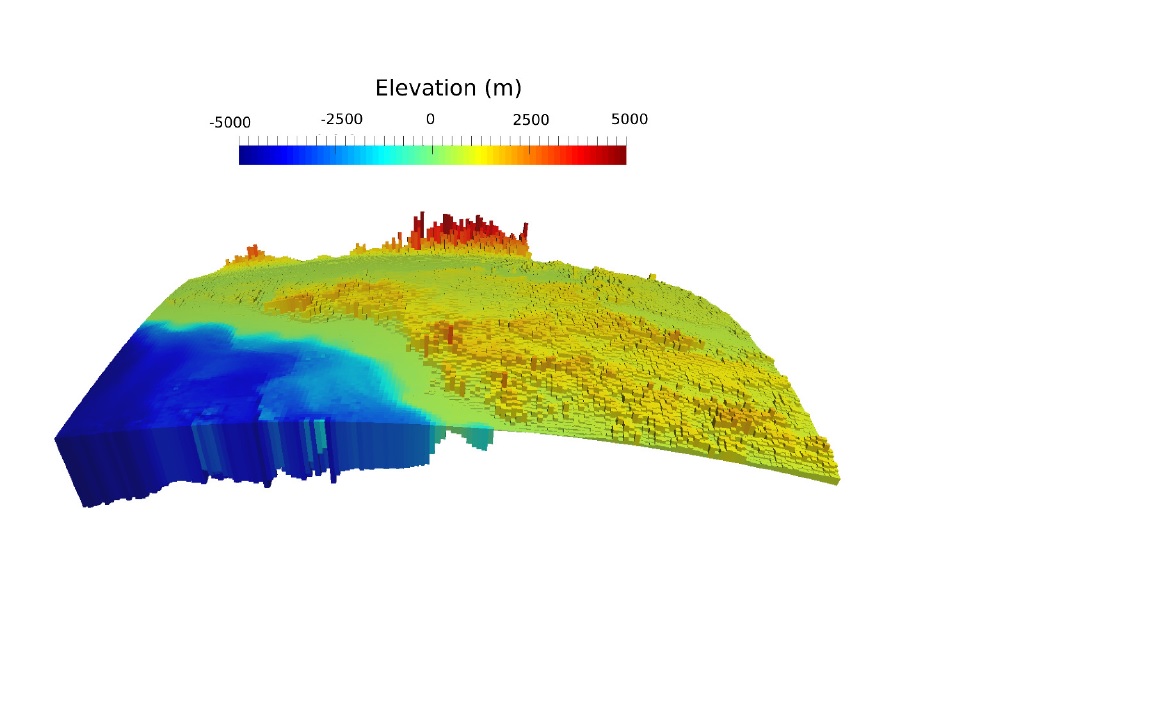 Research fieldsLarge-scale local gravity modeling
We developed a novel fast and accurate forward modeling algorithm for large-scale 3D gravity problems with complicated distributions of density and arbitrary topography using unstructured grids. Our algorithm uses an adaptive multi-level fast multipole (AMFM) method to substantially reduce the computational cost of the gravitational interactions between observation points and mass source elements. A set of arbitrarily distributed observation points is hierarchically on structed on an observation octree, while a source tetrahedral grid is hierarchically constructed on a mass octree. The independence between the bservation octree and the mass octree means that our new algorithm can deal with different gravity survey configurations, such as ground and airborne gravity surveys. A synthetic cube mass model is used to test the performance of our newly developed AMFM based modeling code. As compared to analytical solutions, the excellent agreement of the solutions clearly verifies the high accuracy of our AMFM method. For an airborne terrain effect evaluation problem where the terrain is represented by a triangular surface retrieved from a digital elevation model, using 16 threads, more than 5800 billons interactions between 1025836 observation points and 5839830 tetrahedral elements were computed in 512.2 seconds by our AMFM method. In contrast, a first-order quadrature approach required 3.77 days to solve the same problem. Hence, our new AMFM based gravity modeling code can substantially accelerate the solution of large-scale gravity inversion roblems. Large-scale global gravity modeling Therefore, in this study, we develop a novel and general approach to fast and accurately compute the global Earth gravity using a combination of adaptive multi-level fast multipole method and the tesseroid grid. In each small tesseroid grid, a constant mass density is assigned which means complicated mass density distributions are naturally considered in our new algorithm. When the inputted tesseroid grid represents the topography model(up surface being the topography, bottom surface being the reference surface), our algorithm efficiently compute the gravity field cause by the topography so that a terrain correction can be performed. When the tesseroid grid represents a set of anomalous mass bodies in the crust or in the mantle, our algorithm turns to be a fast and key routine for inferring the mass density distribution in gravity inversion problem. Clearly, our new algorithm and code can easily be applied to solve global scale gravity problems in other planets such as in Lunar andMars. To verify the accuracies and speed of our new algorithm, the ETOPO1 global topography model (1-minute resolution) is used. First, a local moderate-size topography model over the Tibet plateau is chosen to verify the accuracies of our AMFM based algorithm by against the results of Gauss quadrature rule (Li et al. 2011; Uieda et al. 2011; Grombein et al. 2013). Excellent agreement between these
|
|




